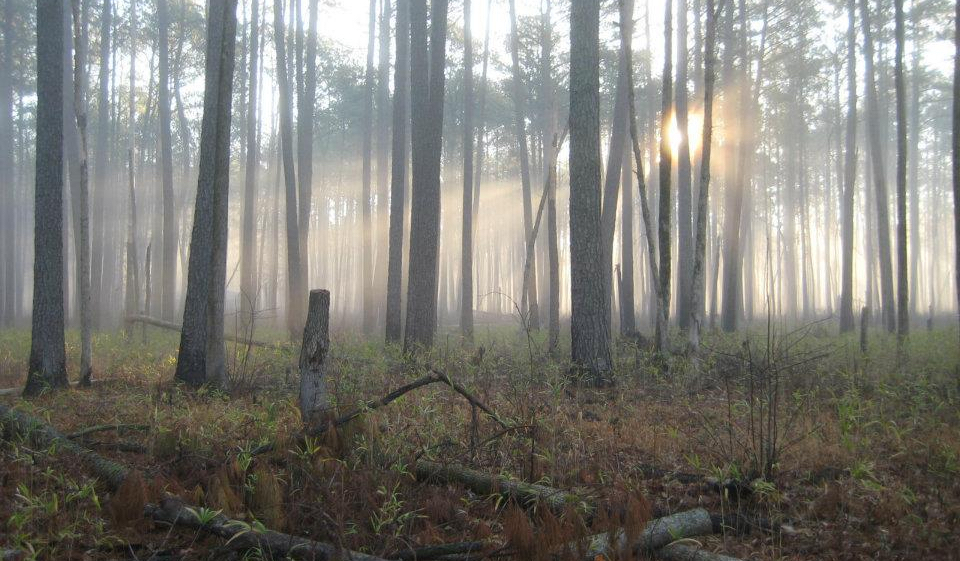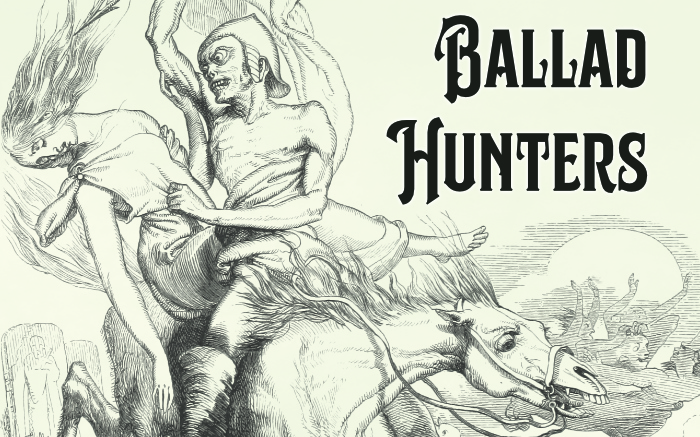Before the American Revolutionary War, slavery was legal in all thirteen colonies. There were no slave states and free states, no Mason-Dixon line that people fleeing slavery could cross and find freedom. Still, there were places you could go: English Florida to live among the Seminoles, a big city to lose yourself in the crowd, or the deep forests across the Appalachian Mountains. The people who escaped slavery to live in the woods were called ‘maroons’. And the most interesting (and gameable) place in the Thirteen Colonies for maroons to live was the Great Dismal Swamp on the Virginia-North Carolina border. The lives of these early freedom-seekers were remarkable, and the Great Dismal Swamp circa 1776 makes an amazing RPG adventure site.
This post is brought to you by beloved Patreon backer Arthur Brown. Thanks for helping keep the lights on! If you want to help keep this blog going alongside Arthur, head over to the Patreon page – and thank you!

At the time, the Great Dismal Swamp was 2,000 square miles of wetland. Today, it’s been drained down to 750. Lake Drummond lay (and lies) at the heart of the swamp. Much of the swamp was twining channels of slow-moving water, black with tannins from fallen oaks. Those same tannins kept wood from breaking down, and they got into everything. Since everything rotted slowly, there was an incredible amount of deadfall, making it hard to get around on the broken maze of dry land. Some of that dense forest was several feet above the water, but it was broken by patches of sucking mud, impenetrable vegetation, and walls of fallen trees. The southern part of the swamp included the Green Sea of fifteen-foot-tall reeds. To the southeast, it faded into brackish water and mudflats along the Atlantic Ocean. To the south, it faded into the dense (but dry) forest of Scratch Hall – the reason for the name lost to time. The swamp was best traversed by canoe, but even then its paths were confusing, terminating in natural berms or deceptively-shallow mud fields.
The swamp was a place of refuge even before the enslaved came to it. Survivors of the destruction of the Susquehannock and Chowanoke nations hid there from their settler conquerers. In 1715, at the end of the Tuscarora War, most of the defeated Tuscaroras moved north to join the Haudenosaunee (Iroquois) Confederation in New York, but some stayed behind and moved into the Great Dismal Swamp. The mixed-race Scratch Hall folk also used the swamp. As the number of enslaved Africans (and their descendants) in the Thirteen Colonies grew, many escaped slavery and moved into the swamp. By 1750, the swamp’s inhabitants were probably majority Black. Safe in their hidden homes, traveling by secret paths, the people of the Great Dismal Swamp intermarried, accepted new residents from outside, and created a new American culture.
Many maroons had unofficial jobs, working for white colonial employers just outside the swamp. The swamp’s cypress and juniper trees made good shingles, but the trees were technically the property of the king. Maroons made good shingle-cutters because their employers could be confident the loggers wouldn’t rat them out. Other maroons worked for the Great Dismal Swamp Land Company, which dug ditches through the swamp to drain it, hoping that someday they could sell the new acreage as farmland. The Land Company also made enslaved laborers work alongside the maroons, and many escaped to join their coworkers in freedom. Some maroons also freelanced, selling lumber, fish, venison, and turkeys to interested buyers. With the money the maroons made, they bought tools, cloth, tobacco, and whiskey: things they couldn’t make for themselves in the swamp.

Maroons who lived near the edges of the swamp, where they could get to the work camps and make a buck, were thus no secret. They participated in the colonial economy, wore Western-style clothing, and carried guns. They built cabins, tended fields atop dry knolls, and hunted. But they were vulnerable. Slaving raids into the swamp weren’t common in this period (they would become so in the years before the Civil War), but they did occur. Those who lived near the edges of the swamp were sometimes caught and re-enslaved.
The people who dwelled deep in the swamp, though, lived a very different existence. It was hard for them to reach the work camps, so they had fewer guns, axes, and manufactured goods. What they did have, they never threw away, but repaired and reused until it wore away to nothing. Archaeological digs on deep-swamp sites turn up almost no artifacts, just the remains of the postholes that supported the maroons’ cabins. Some of these postholes are lined to make them sturdier in the damp earth. With no gravel to use as a liner, the deep-swamp maroons used pot sherds they dug up: the discarded trash of a Native culture from almost 2,000 years before, when the swamp was drier. The used dugout canoes and bark canoes to get around. They wore clothes made of animal pelts and carried bows and arrows. The fur on the pelts left some edge-of-the-swamp maroons convinced that the deep-swamp maroons were hairy, like bigfoot.
Eyewitnesses reported deep-swamp maroons were cautious, even paranoid. There were adults deep in the swamp around the American Revolution who were second-generation maroons. There were children who were third-generation and had never seen an outsider. Some lived in villages of a few dozen people in as many as six cabins raised on posts. Some families built cabins on stilts way out in the Green Sea, hidden by the fifteen-foot reeds. And eyewitnesses insist some families lived not in cabins (which are hard to conceal) but in holes in the ground. If anyone somehow reached the heart of the swamp, they could paddle right past an underground home and not know it. Following someone back to their hidden family homestead was probably an invitation for them to kill you to preserve their secret. What you don’t know, you can’t reveal to slavers.

From the 1690s to the 1740s, the people of the Great Dismal Swamp launched frequent raids into colonial territory to rustle cattle. In 1775, Lord Dunmore, the royal governor of Virginia, made overtures to the maroons to fight for Britain in the war everyone could see was coming. Through the Revolutionary War, maroons from the Great Dismal Swamp fought in pro-British partisan bands, serving especially as guides, scouts, skirmishers, and woodsmen. Even after the war ended, raids from within the swamp persisted for several years. In the mid-1800s, slave raids into the swamp intensified, but they never reached the deep swamp. In the Civil War, maroons emerged to raid the surrounding slave society once again. Interestingly, white Virginians and North Carolinians called these maroon raiders “Tories” – that is, folks who remained loyal to Britain during the Revolution. That means the memory of maroon involvement in the Revolution persisted for almost a century.
It’s also not outside the realm of possibility that some maroons may have fought on the American side in the Revolutionary War. Many or most soldiers fight for pay first and ideology second, and some of the Virginia slaveholders who owned the Great Dismal Swamp Land Company (a number that included George Washington) might have tempted some of their employees into the Continental Army with the promise of a paycheck or freedom papers. A quarter of the Continental Army was Black, after all.
Finally, the Great Dismal Swamp and its maroons have every kind of spooky folklore associated with them. Lake Drummond at its center, so the stories say, is bottomless and/or connected to the sea by secret tunnels. There is a mysterious “something” that drags down deer and humans who swim in the swamp. There are reports of eerie sounds, serpent gods living in caverns under the Green Sea, spirits of the dead, and dragons. There was a Black conjure-woman named Grace Sherwood who lived on the edges of the swamp. Though she was convicted of witchcraft in 1706, she was set free and the royal governor granted her 140 acres of land. My absolute favorite is the “terrible people of the mists” who are sympathetic to folks fleeing slavery. In a great twist on will-o’-the-wisp stories, the people of the mists carry ghostly lanterns. The lights guide fugitives safely to freedom in the swamp, but lure their pursuers into bogs where they will drown.

At your table, you might tempt your party into venturing into a swamp based on the Great Dismal Swamp, in which dwells a fictional people inspired by the Great Dismal Swamp maroons. Maybe the party’s trying to get them to join a particular side, like Lord Dunmore did in 1775. Maybe the PCs are pursuing some lost knowledge and the last person known to have possessed it (someone like Grace Sherwood) escaped into the swamp a generation ago. Hopefully her descendants are alive, and have passed the knowledge down.
The party must explore the swamp, fighting a swamp monster or two along the way. As the party pushes deeper, the people they meet become less connected to the outside world. In a fantasy world, simple shortbows and stone-tipped arrows replace longbows and crossbows. Untreated pelts replace linen clothes. The PCs have to convince someone to paddle them (blindfolded) by canoe to an anonymous forested knoll where they can talk to a community leader or medicine woman. If that person doesn’t like what the party says, or if the PCs betray and attack them, the party will be stuck out in the swamp.
Whatever you do, don’t try to follow someone back to their secret homestead! They’ll try to kill you, probably by luring you into a bog where only they know the way out.

I was asked to write 300 words about the Great Dismal Swamp maroons for the Revolutionary War RPG Nations & Cannons. The stuff I found was so cool, and 300 words so short, that I knew I had to turn my other notes into a blog post (with the N&C team’s permission, of course). I got to write about a couple other Black heritages relevant to the Revolution too: Angolans, Haitians, Coromantees, Seminole Freedmen, and those born into slavery in the Thirteen Colonies.
Finally, keen-eyed readers may have noticed I’ve started capitalizing the word ‘Black’. Nationwide editorial standards have shifted in that direction, and it looks like they’re sticking, so I’m making the change. I won’t be capitalizing ‘white’, because white nationalists do that and I don’t want to give the impression I’m with them.
Sing and fight magical folk ballads in 1813 England and Scotland! This free early-access edition has everything you need to play a Ballad Hunters one-shot about the traditional song Barbara Allen.
The game has:
- Investigative adventures centered around the lyrics of traditional British ballads
- Simple, story-driven rules inspired by the GUMSHOE engine
- A historical setting that is grim but hopeful
- Magic where characters make ballad verses come to life
Ballad Hunters is the sequel to Shanty Hunters, winner of a 2022 Ennie Award (Judge’s Choice) and nominee at the Indie Groundbreaker Awards for Most Innovative and Game of the Year.
You can download the free early-access version of the game from DriveThruRPG or Google Drive.
–
Sources:
– Slavery’s Exiles: The Story of the American Maroons by Sylviane A. Diouf (2014)
– Hidden Americans: Maroons of Virginia and the Carolinas by Hugo Prosper Leaming (1995)
– American Refugees by Marion Blackburn in Archaeology (2011)
– Description of the Dismal Swamp and a Proposal to Drain the Swamp by William Byrd II (1728-1737)
– The Westover Manuscripts : Containing the History of the Dividing Line betwixt Virginia and North Carolina; A Journey to the Land of Eden, A.D. 1733; and A Progress to the Mines by William Byrd II (1733)







